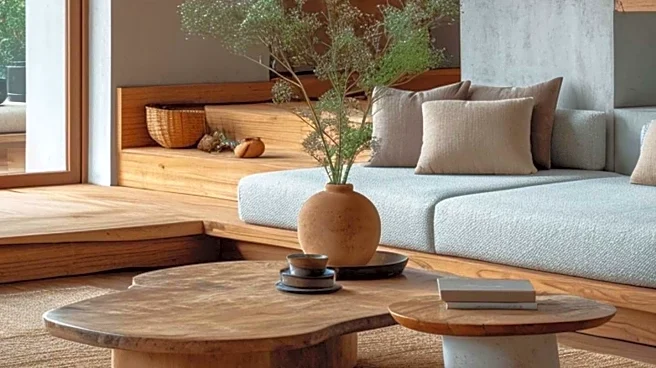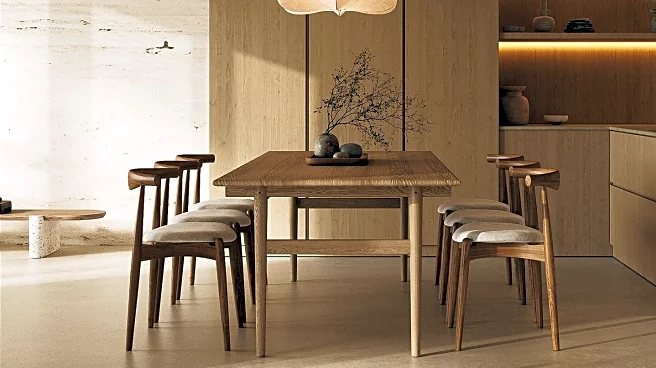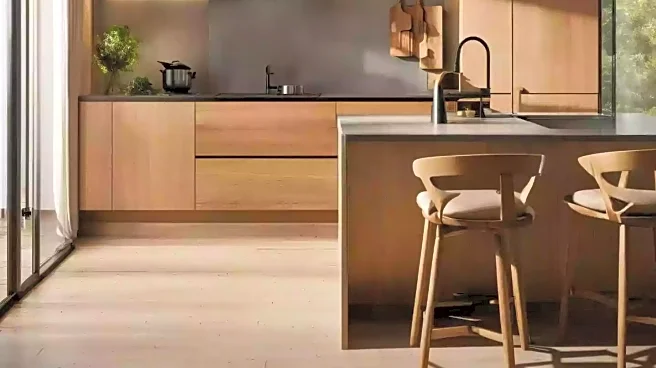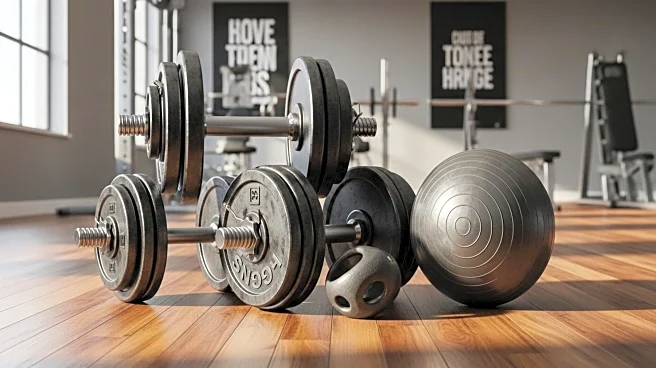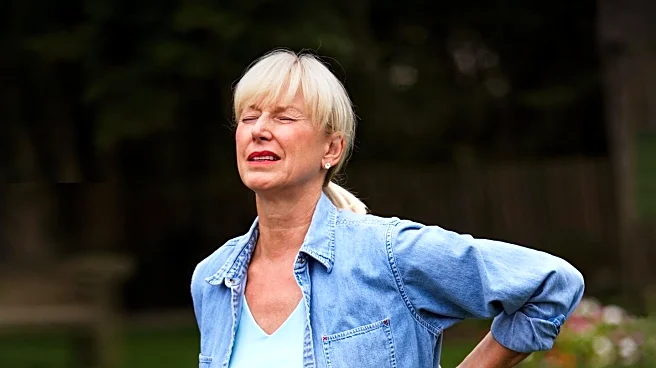What's Happening?
Actress Drew Barrymore has revealed her passion for home renovation and design, describing it as a form of meditation. In a recent interview, Barrymore, 50, shared that the process of transforming a property helps her feel present and mindful. Known for her acting career, Barrymore has showcased her renovation skills on social media, emphasizing the therapeutic nature of hands-on work. Her design style, which she describes as 'downtown rustic,' focuses on personal touches and warmth. Barrymore has candidly discussed her struggles with parenting burnout and highlights the importance of prioritizing relationships and self-care, which she finds through home design.
Why It's Important?
Barrymore's approach to home renovation reflects a broader trend towards mindfulness and intentional living. Her emphasis on design as a therapeutic practice aligns with growing interest in sustainable and minimalist lifestyles. This trend impacts industries related to home improvement, interior design, and mental health, as more individuals seek ways to incorporate mindfulness into their daily lives. Barrymore's advocacy for therapy and self-care also contributes to the normalization of mental health practices, potentially influencing public attitudes and increasing demand for related services.
What's Next?
As Barrymore continues to share her renovation journey, it may inspire others to explore home design as a form of self-care. This could lead to increased interest in DIY projects and home improvement, benefiting related industries. Additionally, Barrymore's influence may encourage more public figures to discuss mental health openly, further destigmatizing therapy and self-care practices.
Beyond the Headlines
Barrymore's renovation obsession highlights the intersection of celebrity influence and lifestyle trends. Her candidness about personal struggles and the therapeutic value of design may encourage broader conversations about mental health and the role of creative outlets in well-being. This development could lead to long-term shifts in how society views and engages with home design and mental health.


